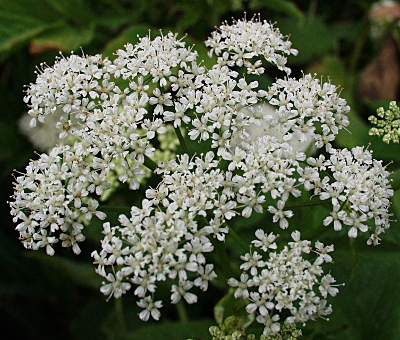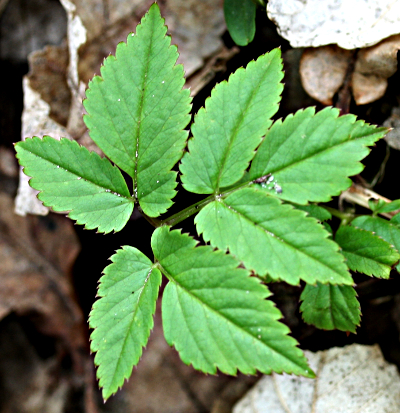Aegopodium |

Inflorescence of the ground elder

The goutweed is often found as an undesired weed in gardens
The only 7 species comprehensive genus is native to Eurasia. The goutweed, the only native species in Germany, has been introduced to North America.
In the genus Aegopodium are gathered together perennial, herbaceous plants with upright stems, which can be branched at the top. Their leaves are ternate or bi-pinnate, the leaflets are toothed or serrated. The petiole forms a broad, membranous sheath around the stem.
The inflorescence is a compound umbel, ie. that the umbel branched again and forms umbels of second order, so-called umbellules. The bracts of the umbels (involucre) and that of the umbellules (involucels) are usually absent. The compound umbels are arranged both laterally and at the top.
The 5 petals are white or reddish, in shape obovate and possess at the apex a narrow, curved inward lobule. Calyx teeth are missing. Both styles are long and spreading, they arise from a cone-shaped disk. The fruits are oblong to ovate, glabrous, laterally somewhat flattened and consist of two half-fruits which are roundish in cross-section.
| Floral formula: |
| *–↓ K5 C5 A5 G(2) inferior |
Meaning of the species name
- podagraria: gr. podagra = "Ankle bracelet", referring in this case to gout in the big toe. Ground elder has been used as a medicinal herb for gout.
Interesting notes
A cultivar of gourweed with variegated leaves is commercially available as variegated bishop's weed or Aegopodium podagraria 'Variegata'. It spreads not as quickly as its wild ancestor.